A High-Performance Magnetic Shield with MnZn Ferrite and Mu-Metal Film Combination for Atomic Sensors
Abstract
:1. Introduction
2. Methods
2.1. The Magnetic Shielding Structure Composed of Ferrite and Mu-Metal Film
2.2. Analysis Method of Shielding Coefficient and Noise
3. Experimental Calculation Results and Discussion
3.1. Magnetic Shielding Coefficient
3.2. Magnetic Shield Noise
4. Experimental Setup and Results
5. Conclusions
Author Contributions
Funding
Data Availability Statement
Conflicts of Interest
References
- Kim, Y.J.; Savukov, I. Parallel high-frequency magnetic sensing with an array of flux transformers and multi-channel optically pumped magnetometer for hand MRI application. J. Appl. Phys. 2020, 128, 154503. [Google Scholar] [CrossRef]
- Zhang, R.; Mhaskar, R.; Smith, K.; Balasubramaniam, E.; Prouty, M. Vector measurements using all optical scalar atomic magnetometers. J. Appl. Phys. 2021, 129, 044502. [Google Scholar] [CrossRef]
- Chalkov, V.V.; Shevchenko, A.N. Studying the atomic gyroscope magnetic shield residual magnetization by comparing parametric resonance signals. J. Phys. Conf. Ser. 2020, 1536, 012013. [Google Scholar] [CrossRef]
- Chen, Y.; Zhao, L.; Zhang, N.; Yu, M.; Ma, Y.; Han, X.; Zhao, M.; Lin, Q.; Yang, P.; Jiang, Z. Single beam Cs-Ne SERF atomic magnetometer with the laser power differential method. Opt. Express 2022, 30, 16541–16552. [Google Scholar] [CrossRef]
- Kitching, J. Chip-scale atomic devices. Appl. Phys. Rev. 2018, 5, 031302. [Google Scholar] [CrossRef]
- Rea, M.; Holmes, N.; Hill, R.M.; Boto, E.; Leggett, J.; Edwards, L.J.; Woolger, D.; Dawson, E.; Shah, V.; Osborne, J.; et al. Precision magnetic field modelling and control for wearable magnetoencephalography. NeuroImage 2021, 241, 118401. [Google Scholar] [CrossRef]
- Forgan, E.M.; Muirhead, C.M.; Rae, A.I.M.; Speake, C.C. A proposal for detection of absolute rotation using superconductors and large voltages. Phys. Lett. A 2020, 386, 126994. [Google Scholar] [CrossRef]
- Pan, D.; Lin, S.; Li, L.; Li, J.; Jin, Y.; Sun, Z.; Liu, T. Research on the design method of uniform magnetic field coil based on the MSR. IEEE Trans. Ind. Electron. 2020, 67, 1348–1356. [Google Scholar] [CrossRef]
- He, K.; Wan, S.; Sheng, J.; Liu, D.; Gao, J.H. A high-performance compact magnetic shield for optically pumped magnetometer-based magnetoencephalography. Rev. Sci. Instrum. 2019, 90, 064102. [Google Scholar] [CrossRef]
- Fan, W.; Quan, W.; Liu, F.; Xing, L.; Liu, G. Suppression of the bias error induced by magnetic noise in a spin-exchange relaxation-free gyroscope. IEEE Sens. J. 2019, 19, 9712–9721. [Google Scholar] [CrossRef]
- Li, J.; Wei, Q.; Han, B.; Liu, F.; Xing, L.; Liu, G. Multilayer cylindrical magnetic shield for SERF atomic Co-magnetometer application. IEEE Sens. J. 2019, 19, 2916–2923. [Google Scholar] [CrossRef]
- Savukov, I.; Kim, Y.J. Investigation of magnetic noise from conductive shields in the 10–300 kHz frequency range. J. Appl. Phys. 2020, 128, 234501. [Google Scholar] [CrossRef]
- Eshraghi, M.J.; Kim, J.M. Low-frequency magnetic noise reduction using superconducting lead sheet magnetic shield for a two-stage pulse-tube cryocooler. Annu. Rep. Riss 2009, 6, 77–82. [Google Scholar]
- Kornack, T.W.; Smullin, S.J.; Lee, S.K.; Romalis, M.V. A low-noise ferrite magnetic shield. Appl. Phys. Lett. 2007, 90, 223501. [Google Scholar] [CrossRef]
- Lee, S.K.; Romalis, M.V. Calculation of magnetic field noise from high-permeability magnetic shields and conducting objects with simple geometry. J. Appl. Phys. 2008, 103, 084904. [Google Scholar] [CrossRef]
- Smythe, W.R. Static and Dynamic Electricity; McGraw-Hill: New York, NY, USA, 1968; pp. 188–190. [Google Scholar]
- Petrescu, L.-G.; Petrescu, M.C.; Ionita, V.; Cazacu, E.; Constantinescu, C.-T. Magnetic Properties of Manganese-Zinc Soft Ferrite Ceramic for High Frequency Applications. Materials 2019, 12, 3173. [Google Scholar] [CrossRef]
- Jin, X.Q.; Zhang, Z.S.; Chen, W. High frequency, wide temperature range, high DC superposition characteristics, high permeability MnZn ferrite material. J. Magn. Mater. Devices 2005, 36, 54–55. [Google Scholar]
- Bevan., D.; Bulatowitz, M.; Clark, P.; Flicker, J.; Griffith, R.; Larsen, M.; Luengo-Kovac, M.; Pavell, J.; Rothballer, A.; Sakaida, D.; et al. Nuclear magnetic resonance gyroscope: Developing a primary rotation sensor. In Proceedings of the IEEE International Symposium on Inertial Sensors and Systems, Moltrasio, Italy, 26–29 March 2018; pp. 1–2. [Google Scholar]
- Fu, Y.; Sun, J.; Ruan, J.; Quan, W. A nanocrystalline shield for high precision co-magnetometer operated in spin-exchange relaxation-free regime. Sens. Actuators A Phys. 2022, 339, 113487. [Google Scholar] [CrossRef]
- Walker, T.G.; Larsen, M.S. Spin-exchange-pumped NMR gyros. Adv. Atom. Mol. Opt. Phys. 2016, 65, 373–401. [Google Scholar] [CrossRef]
- Lu, J.; Sun, C.; Ma, D.; Yang, K.; Zhao, J.; Han, B.; Quan, W.; Zhang, N.; Ding, M. Effect of gaps on magnetic noise of cylindrical ferrite shield. J. Phys. D Appl. Phys. 2021, 54, 255002. [Google Scholar] [CrossRef]
- Lu, J.; Ma, D.; Yang, K.; Quan, W.; Zhao, J.; Xing, B.; Han, B.; Ding, M. Study of magnetic noise of a multi-annular ferrite shield. IEEE Access 2020, 8, 40918–40924. [Google Scholar] [CrossRef]
- Ma, D.; Lu, J.; Fang, X.; Yang, K.; Wang, K.; Zhang, N.; Han, B.; Ding, M. Parameter modeling analysis of a cylindrical ferrite magnetic shield to reduce magnetic noise. IEEE Trans. Ind. Electron. 2022, 69, 991–998. [Google Scholar] [CrossRef]
- Zhang, H.; Zou, S.; Chen, X.Y. Parameter modeling analysis and experimental verification on magnetic shielding cylinder of all-optical atomic spin magnetometer. J. Sens. 2014, 44, 1177–1180. [Google Scholar] [CrossRef]
- Dang, H.B.; Maloof, A.C.; Romalis, M.V. Ultrahigh sensitivity magnetic field and magnetization measurements with an atomic magnetometer. Appl. Phys. Lett. 2010, 97, 151110. [Google Scholar] [CrossRef]
- Zhang, Y.; Huang, S.; Xu, F.; Hu, Z.; Lin, Q. Multi-channel spin exchange relaxation free magnetometer towards two-dimensional vector, magnetoencephalography. Opt. Express 2019, 27, 597–607. [Google Scholar] [CrossRef]
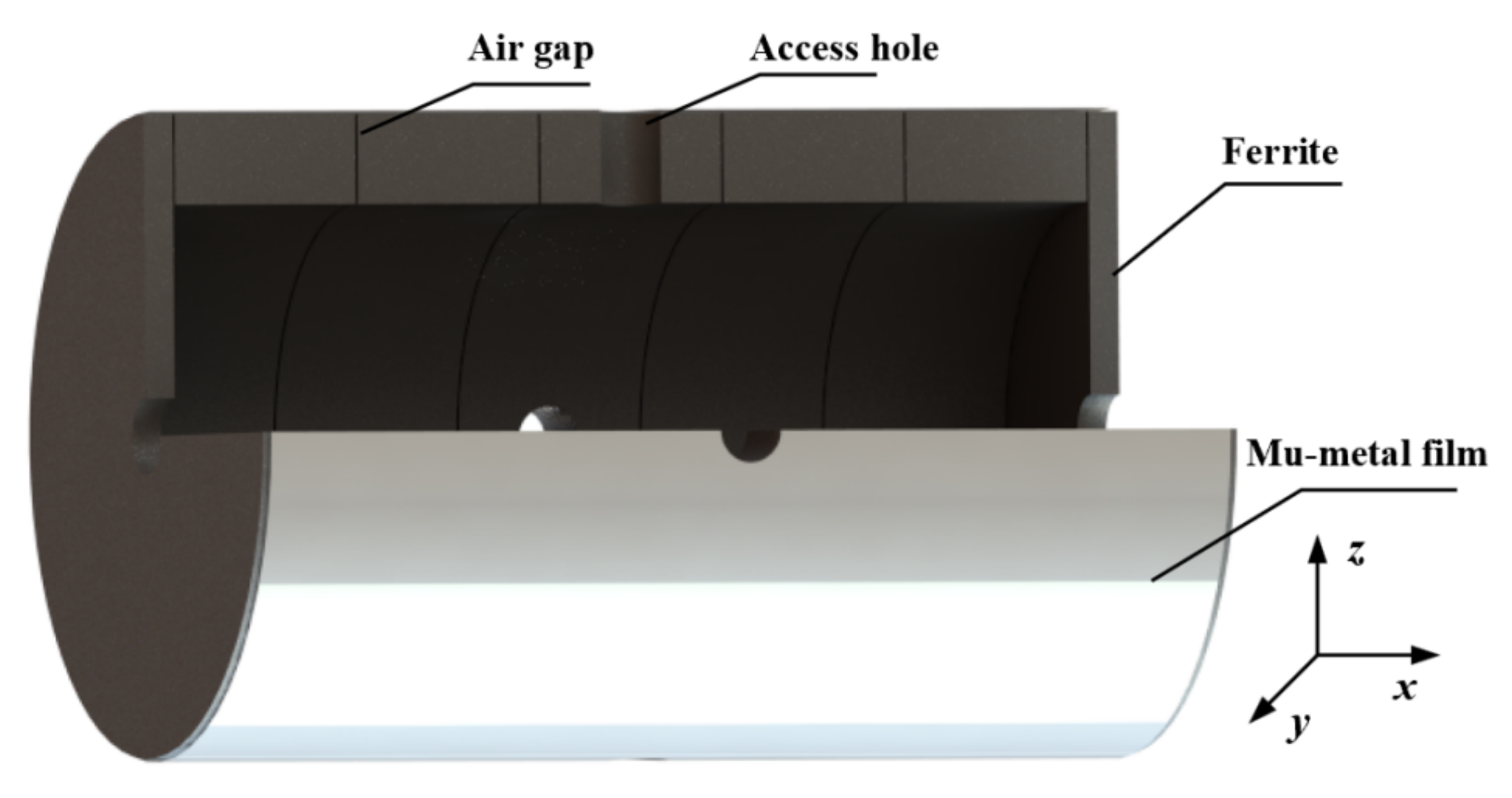
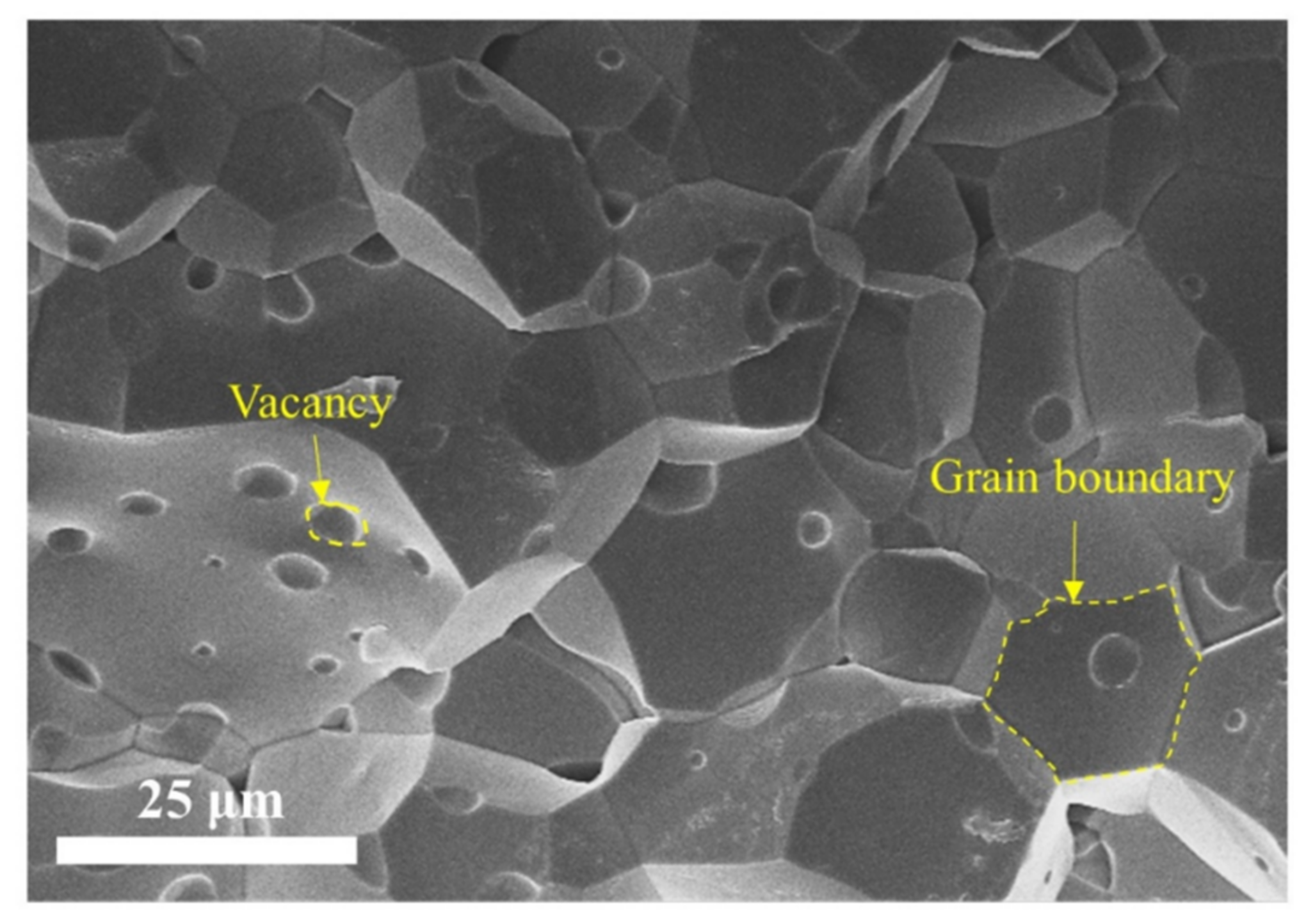

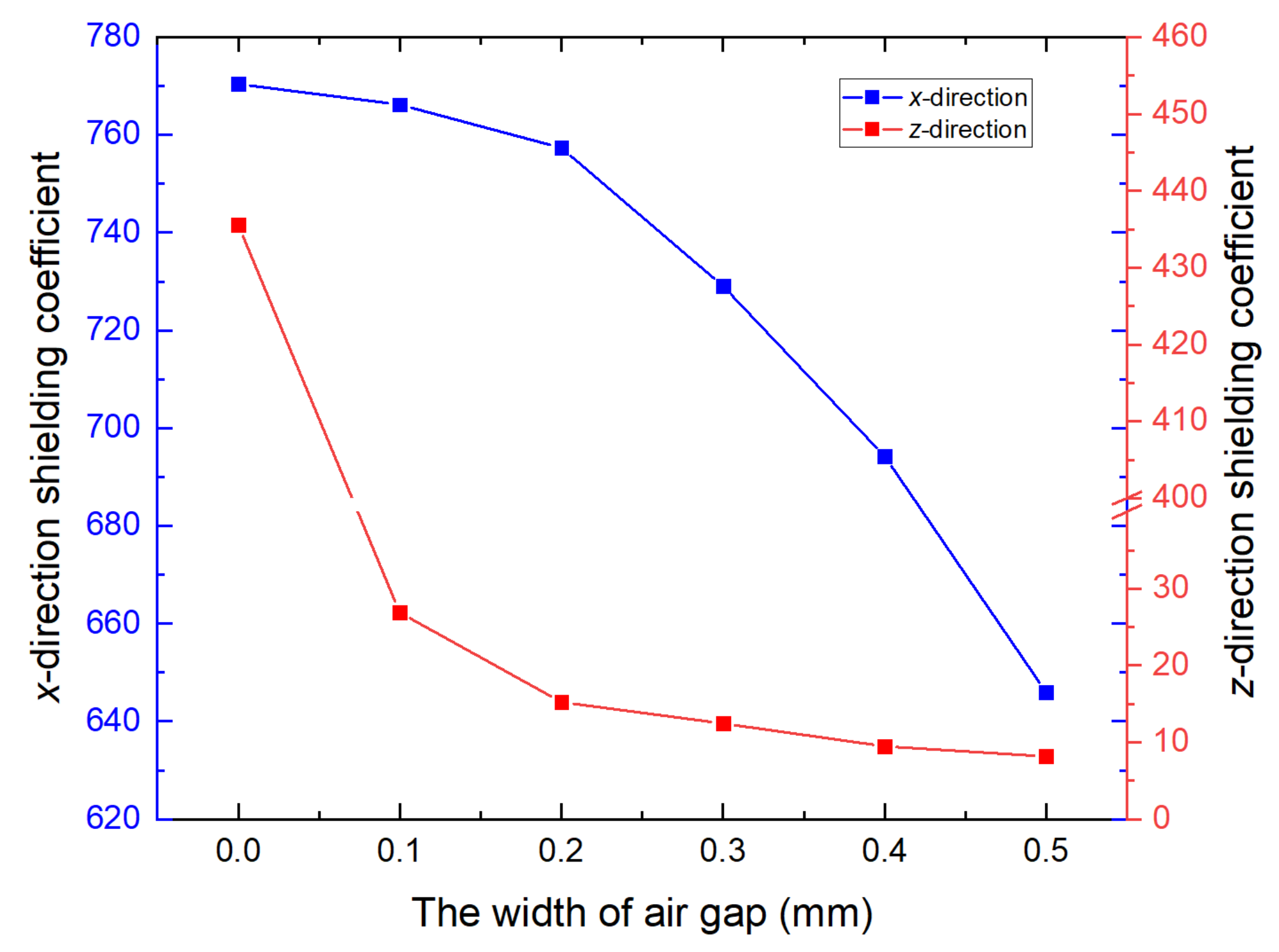

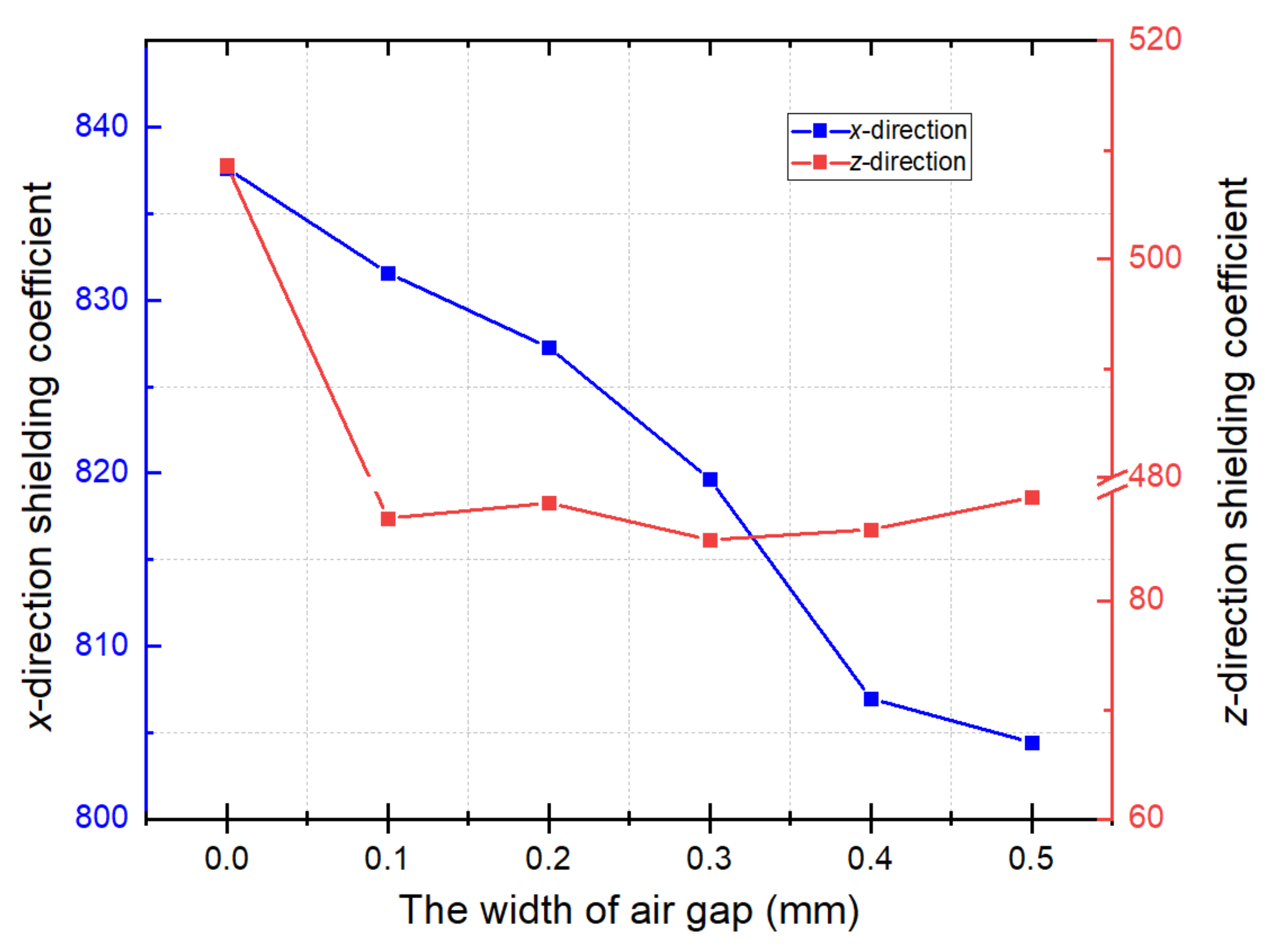
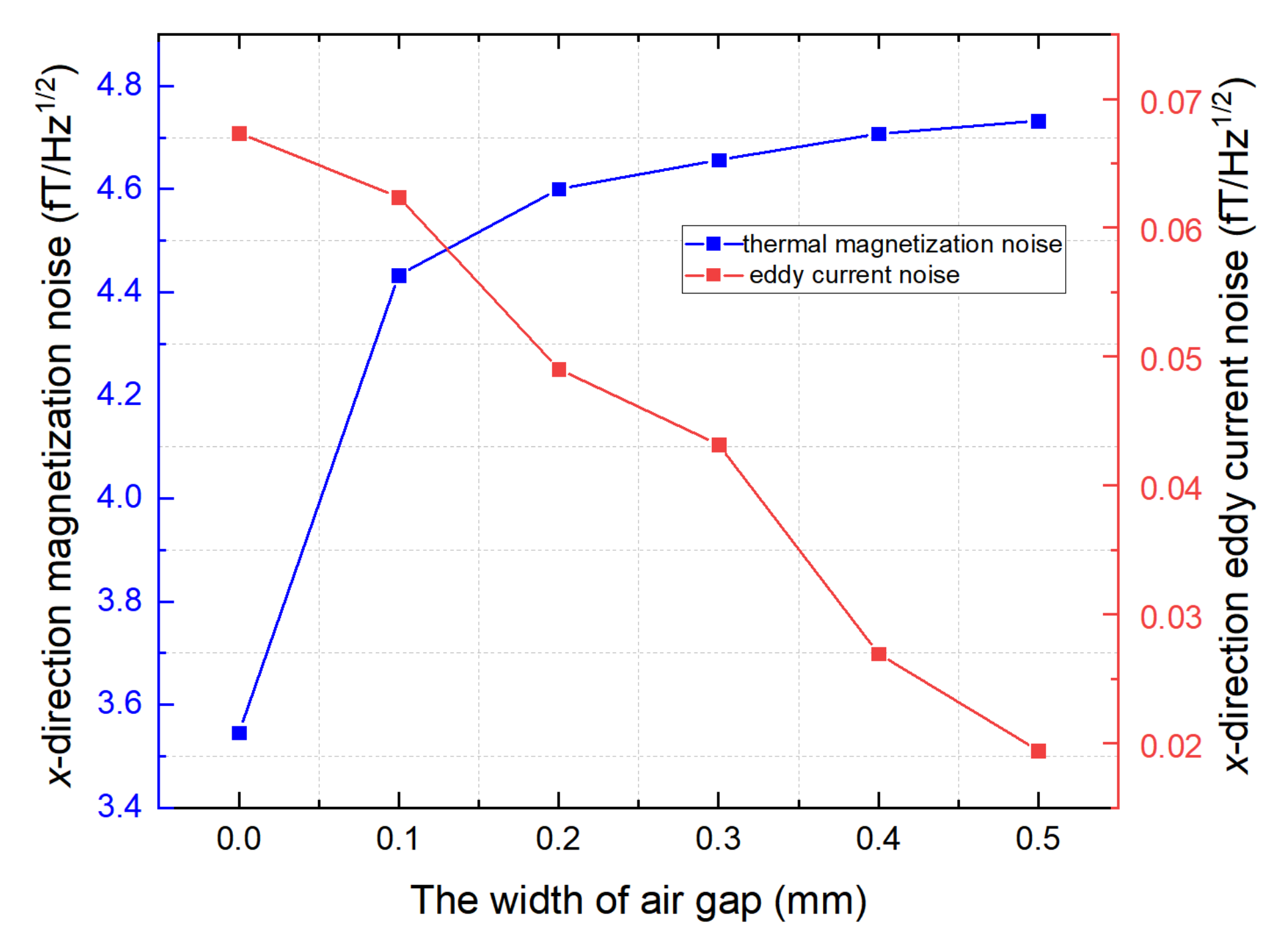

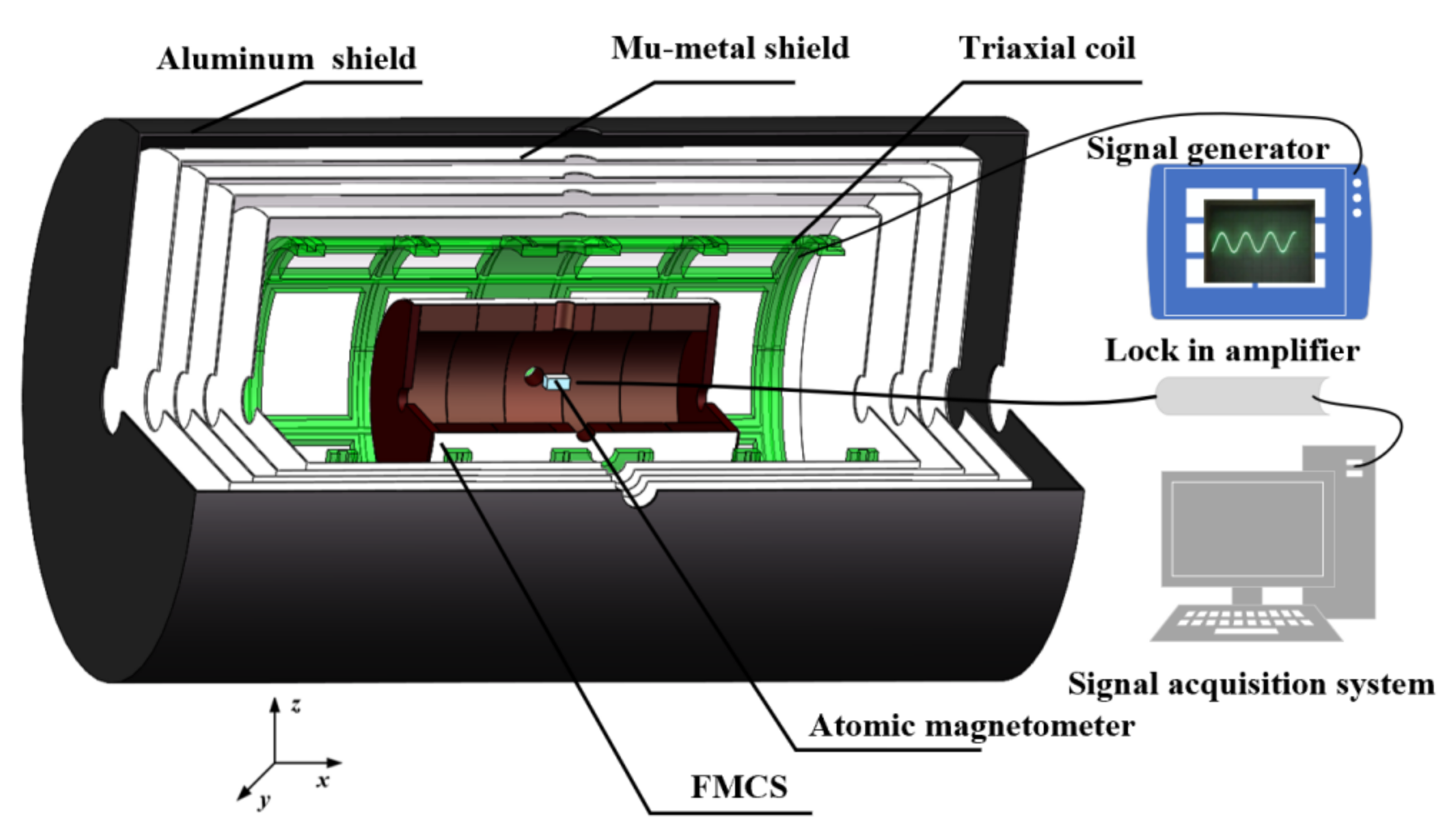
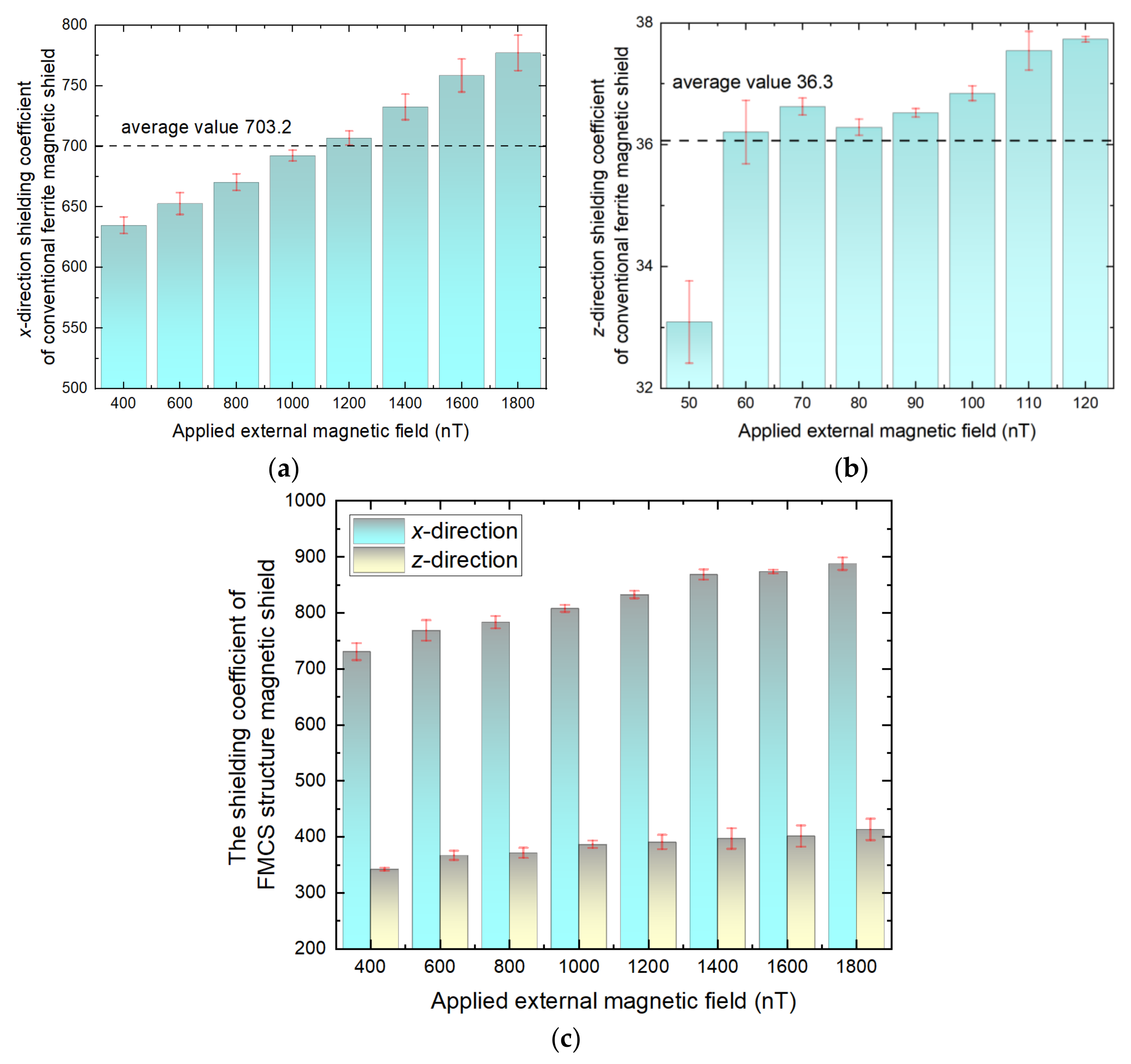
| Element | Fe | Zn | Mn | Na | P | Si | Ca |
|---|---|---|---|---|---|---|---|
| wt.% | 48.7568 | 13.4317 | 11.7299 | 0.0681 | 0.0676 | 0.0473 | 0.0288 |
Publisher’s Note: MDPI stays neutral with regard to jurisdictional claims in published maps and institutional affiliations. |
© 2022 by the authors. Licensee MDPI, Basel, Switzerland. This article is an open access article distributed under the terms and conditions of the Creative Commons Attribution (CC BY) license (https://creativecommons.org/licenses/by/4.0/).
Share and Cite
Fang, X.; Ma, D.; Sun, B.; Xu, X.; Quan, W.; Xiao, Z.; Zhai, Y. A High-Performance Magnetic Shield with MnZn Ferrite and Mu-Metal Film Combination for Atomic Sensors. Materials 2022, 15, 6680. https://doi.org/10.3390/ma15196680
Fang X, Ma D, Sun B, Xu X, Quan W, Xiao Z, Zhai Y. A High-Performance Magnetic Shield with MnZn Ferrite and Mu-Metal Film Combination for Atomic Sensors. Materials. 2022; 15(19):6680. https://doi.org/10.3390/ma15196680
Chicago/Turabian StyleFang, Xiujie, Danyue Ma, Bowen Sun, Xueping Xu, Wei Quan, Zhisong Xiao, and Yueyang Zhai. 2022. "A High-Performance Magnetic Shield with MnZn Ferrite and Mu-Metal Film Combination for Atomic Sensors" Materials 15, no. 19: 6680. https://doi.org/10.3390/ma15196680
APA StyleFang, X., Ma, D., Sun, B., Xu, X., Quan, W., Xiao, Z., & Zhai, Y. (2022). A High-Performance Magnetic Shield with MnZn Ferrite and Mu-Metal Film Combination for Atomic Sensors. Materials, 15(19), 6680. https://doi.org/10.3390/ma15196680





